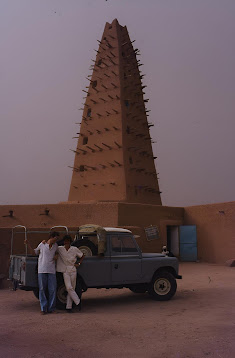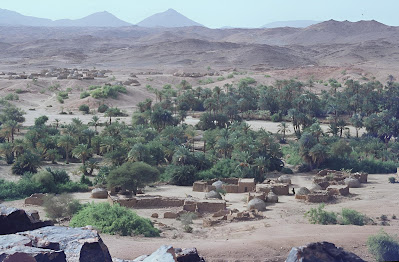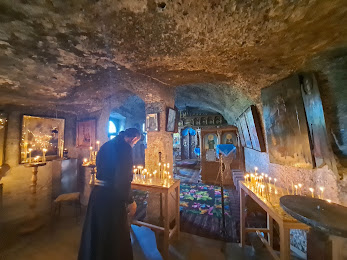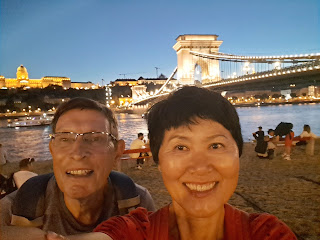Finally the Baltic States: a summer trip by Anton van Zutphen and Biya Han in 2022. Observations and a personal historic perspective.
The countries Lithuania, Latvia and Estonia had a short period of semi/full independence following World War 1. Then in the run-up to World War 2 these were assimilated again briefly by Germany and later fully by the USSR. This, until 1991 when the USSR under the leadership of President Mikhail Gorbatchev broke up in many independent countries leaving 'Mother Russia' as a shrunken withered old lady with its new President Boris Yeltsin to manage it.
Right now, with the war in Ukraine and the problems Russia has at its borders with Moldova and Georgia, the impact can still be felt and is worrying many Europeans seriously.
Another border Westwards, which offers an interesting example of an 'En-Clave area' is Kaliningrad (Koenigsberg in German) a port-area that remains ice-free in winter on the coasts of Lithuania/Poland which officially belongs to Russia. One million people, mostly Russians live here and the area is connected with Russia (through Lithuania) by a railway which ferries goods and people from and to Russia. I looked out very carefully for this special railway when travelling through Lithuania but never saw it. Obviously it is shielded from views from the general public and protected by security forces in a discrete manner.
I had never been to this part of the world but read about it when I was at secondary school. My father had stamps from the Free Trade Zone of Danzig in his collection and as a boy of six I looked up in the Dutch 'Bos atlas' where this 'country' was situated.
Unfortunately Kaliningrad was now out of the question for Biya and me to visit. So we decided to start at the famous Hansa-Stadt harbour of Gdansk, or Danzig (in German). We flew 23rd July from Eindhoven airport where we had to line up some four hours before departure. All airports in the NL during Corona-time lacked staff (mainly bagage handling, security, handluggage checks); incredible but true. Staff had been let go a year earlier during the full blown Covid epidemic when travel had slowed down, and workers had not been replaced in time. Shame to the NL! In the past my country was known for its efficiency. Forget it. These days we cannot even run our railways properly.
Hansa World / Hansa Stadt / Treaty: an important concept focussing on the sea and river trade between the 13th and end of 16th century. The professional associations of traders and other 'guilds' in over 150 cities/small towns throughout North-Western Europe worked together on free trade, protection of their goods and priviliges for their members. It was a huge semi-liberal trade treaty with towns such as Luebeck, Gdansk, Tallinn, Riga, Bergen in Norway, Bremen, Hamburg, Cologne, Bruges, Antwerp, and Zwolle and Zutphen in the NL amongst others.
 |
| Gdansk, historic vessel Hanseatic trade |
YES, indeed the town from which my family must have come originally although I have never been able to justify this. Our traceable family tree goes back only to around 1740...and no mention of the town 'Zutphen', but only of the area around 'Veghel', some 100 kms south of Zutphen town, and 40 kms North of Leende.
Biya and I enormously enjoyed visiting the trader's houses/offices and warehouses in the Baltic states / Riga is tops! Beautifully painted and enriched with many statues. Inside, all wooden panelling and high, decorated ceilings.
 |
| Gdansk mainstreet with Hansa trading houses |
This important trade in grain, wood, amber, cloth, to name a few commodities, provided employment and stabilized the whole area along Europe's North-Western coast economically, and such for four centuries. I had not expected that the centre of Gdansk had been kept in style so well (and repaired with E. U. monies). We arrived in the middle of a festival and streets were crowded with people having fun. Good streetfood like big sandwiches with lard, minced meat topped up with tomato and cornichon. Loved it! In particular with a pint of 'Tyskie Lager'.
 |
| Gdansk streetfood / yummy! |
Actually the port of Gdansk is smack dab in the middle of town. And the weather: sunny with a soft breeze. Aghhhh, the weather in the summer in the Baltic states with warm winds from continental Russia is something to remember. We did not have any rain; just sun and not too hot. Evenings, all cools down but still pleasant. Swimming in the Baltic sea or better walking and sitting in it was a nice thing to do. And quiet man! Compared with the Dutch and German isles like Texel and Sylt, the Baltic shores are 'empty', and clean, and also with nude beaches and dunes to relax in. Haha, even Biya zipped down and out; and tried out the women's-only nude beach and talked with the ladies there; in Paernu, Estonia.
 |
| Nicely called Ladies' Beach / nudist beach in Paernu, Estonia |
As Kaliningrad in Russia was forbidden terrain, we took a slow train through the wetlands of isolated 'Masurenland' to the towns of Olsztyn and Elk in North-Eastern Poland, where we found a nice room, right at the lake. We had by now already agreed that if we like it somewhere, we stay at least two nights; and in the larger cities often three nights. Clearly, moving around like a grasshopper and change hotelbeds every night; NO, that is too fast and factually you won't remember anymore where you actually have been! Thus we travelled all around the Kaliningrad area into Lithuania and ended up in Klaipeda. There used to be a ferry between Gdansk in Poland and Klaipeda in Lithuania but because of the troubles with Russia and the warships going in and out of Kaliningrad it was suspended.
So we arrived from the East and visited one of the most beautiful sites in Lithuania: the 60 metres high dunes of Nida, a sandy strip on a landtongue some 20 kms long, and preciously kept intact. Ultra-famous German writer Thomas Mann (Nobel Prize winner in 1929 and author of 'Death in Venice'), had his summer cottage on the Nida strip. His works were later, in the 'Third Reich', banned by Hitler.
 |
| The famous dunes at Nida, Lithuania |
This area is protected by signs (Do not go here or, Forbidden to enter here!) though, when we wandered through the dunes close to the sea, Biya (who else?) decided to stroll a bit too far and I had to call and summon! her back because she was nearly stepping onto Russian territory. Because of the vast sandbanks and dunes the Russians could have had an easy enough shot at her from a mile upshore. We saw the bunkers Russia side, but never a clear border. And I was afraid of mines as well.
 |
| Dune landscape Nida / the green strip is where Russia starts |
Anyway, we were the only walkers that came so close; the locals knew better! From Nida there is an old road, submerged during storms, that connects with Kaliningrad and that was in existence for centuries (now closed obviously). The weekly mail-coaches drawn by four if not six horses, from St. Petersburg to Gdansk and onto Hamburg, Amsterdam, Brussels and Paris used to pass through here. That is how the mail went end of 18th century when the elite of St. Petersburg felt part of the high class and nobility of Western Europe. 'Noblesse oblige'.
Because the Baltic shores seem endless, and well connected, we visited a few pretty beach locations like Palanga in Lithuania, Dubulti on the outskirts of Riga in Latvia, and the best one: Paernu in Estonia. We 'hotelled' twice in Paernu. Why? The weather was gorgeous, the beach idem dito, the town spacious, leafy and quiet. Our 'youth hostel' top of the pops with mouthwatering mussles. This town was the preferred holiday resort for the well to-do Russians from St. Petersburg. And many of these families still own houses / big houses! The beach has a ladies' nude section close to the dunes and men are warned that they approach an unusual location with undressed ladies. And I guess I was the only man that I saw near it. Then I walked by this section through the undeep sea and had my sight firmly onto the Northwest, direction Sweden! Honest to God!
 |
| Biya in Paernu, Baltic Sea |
Like in Moldova, quite a few established Russians (from the times of the USSR) rent out their properties to tourists. Must be uneasy for the Russians these days. The independent Baltic states regularly 'upgrade' the requirements for all kinds of services and employment. True or not true but Latvia now requires people employed by government to speak, read and write the national Latvian language, the now elderly Russians never learnt. Visas for Russians are now a must. So imagine, your typical rich Russian family has had property for more than 75 years in Paernu; now because the world has changed they may not be allowed to visit it anymore, and there could be a time soon that holders of a Russian passport are not be allowed in at all. I would not be surprised if that happens in the coming two years as confrontation between Russia and NATO states deepens. Russia channels illegal immigrants into Finland, and possibly will start doing this into the Baltic states as well soon. And how do mostly young parents who have a Russian father/mother and a Latvian spouse feel now? This story is just unfolding...
Then how different from Western Europe: no diversity as to how people look. We hardly saw any Africans or Asians at all. Biya ran into some Uzbeks in Palanga beach market who thought she was a sister from their tribe. Certainly in a big country like Poland we did not see 'non Europeans'. Clearly their (illegal) immigrants blockage system works. Then the moment you cross from the Czech Republic into Germany wow...it is migrants all over in the trains and buses. And because we benefitted from the 9 euros one month Covid related cheap transport fee, I thought during the trainride from Schwandorf to Nuremburg to Aachen that I/me, Anton is the exception in Germany. My looks were in the vast minority!
We travelled at the end of the summer season and met mostly Germans, a few like Joerg and Christiane on their bikes; a handfull of Americans visiting their ancestor's places and hardly any young travellers. We saw some Israeli tourgroups in Riga, Vilnius and Prague that visited the Jewish ghettos, which are all clearly marked. The Baltic states and Poland housed large populations of Ashkenaze Jews before World War 2. The Vilnius ghetto was the largest and had more than 40.000 Jews packed in large blocks of houses and apartments with their infrastructure of schools, hospital, clinics, synagogues, and shops. When Adolf Eichmann, in charge of Hitler's holocaust programme closed the ghetto in September 1943, zero people were left. Biya and I wandered through it for hours. It is a rabbit warren of narrow streets, surrounded by a few wide avenues. It was easy for the Nazi regime to control these large areas by simply blocking off the streets with guarded walls and barbed wire. When walking through Vilnius, ghetto scenes out of the movie 'The Pianist' by Roman Polanski (2002) automatically popped up in my head. I saw the terrible places around me. Incredible that people were and are capable of doing this. One genocide after the other against ...Armenians some 100 years ago in Turkiya; Krim-Tatars, Ingushetians and Chechens during the Stalin regime as of 1944; and Tutsi's in Rwanda in 1994, amongst others. We met by chance Zydrone the sympathic travel guide-lady in the ghetto; she lived there in a refurbished backstreet apartment. The three of us spoke Spanish and English with each other and she explained how after WW2 the ghetto itself 'survived' for some 40 years before the newly established Lithuanian government started to re-arrange it. But the old hospital the Jews were managing is still there; with bullet holes all over it!
I grew up during the Cold War with the Iron Curtain firmly closed, and having visited East Berlin quite often I was very disappointed by the looks of that place, compared to West Berlin. And of course, Berlin had been destroyed in 1944-45 and the Russians had no means to rebuild it, whereas the Americans and West Germans pumped billions of Deutschmarks into West Berlin. Then places like Gdansk, Kaunas, Riga, Tallin and Vilnius had kept their old cobbled streets and Hansa houses and 'done them up'. So colourful with the churches in perfect shape and open all the time. The squares neatly arranged with trees around them and old fashioned music kiosks for Sunday afternoon live music.
What did strike us with the young people especially in Lithuania and Poland was....tatoos galore. And the ugly ones with deadheads, skulls, skeletons, dragons, snakes, naked ladies, abusive and negative language and so on. Men and women. Over lunch in Vilnius we were served by this pretty young lady with some horrible tatoos. Biya was frank and wanted to know 'Please tell me, what do you like about them tatoos', and she responsed sadly 'I was on holidays in Turkiya, got drunk and then had it done'. I sincerely believe that in Poland, one out of every four people between 15 and 50 years has this kind of tatoos. In the old days; 1960...? only sailors and criminals did this in the Netherlands. Grrr, so 'filthy'. Biya and I fail to understand the message, if there is one at all.
We had one quite long trip from Vilnius to Warsaw, onto Krakow (colourful!) and onto Prague in the Czech republic. Then entering Poland we got stuck in Bialystok railway station and spent the night on a bench outside. Biya slept nicely, covered with her sleeping bag, while I spied on the alcoholics that hung around the station and kept an eye on our stuff haha: I did and they did! It was safe but then we were not the only ones sleeping outside; also some young girls by themselves. I guess they were used to it; and also used to the harmless alcoholics. And the railway police walking by every hour found everything in order too.
Prague, its Castle and bridges and the Moldau river. We stayed in the Continental hotel / 5 stars for the price of 1 star / with a sumptuous breakfast outside, overlooking the Golden Domes of the city; thanks to Biya's booking.com skills. Of course we took a romantic afternoon cruise on the Moldau river.
 |
| Garden of our landlady in Kaunas, Lithuania |
OK Anton, you are in the Czech Republic; the time to drink Pilsner Urquell has started now!
Then a day and night in Karlovy Vary with its spa's / healthy mineral water all over town which people kept drinking from faucets/fountains while strolling around with a glass. What a town too: simply beautiful. I had been here in 1974 but forgotten most of it. 'Karlsbad' it was called 100 years ago. The rich, famous and free men and women during the liberal decadent days between the two World Wars partied overhere in exuberance, fully confident of themselevs. Something like it can be viewed in the cult movie 'Cabaret' (1972), directed by Bob Fosse with Liza Minelli starring. This 'Greek or Roman grandeur' can still be seen everywhere, reflected in the buildings.
I had secretly planned it well before starting this Baltic trip: end up in Pilsen, Czech Republic and down a few beers with Biya at the Urquell Pilsner brewery during my birthday 22nd August. And it worked out! We arrived by train and saw the brewery from the station. Here is the place! The foremost brewery in the world where the type of beer called 'Pilsner' was brewed first; and it was here in Bohemia in 1842. And this Pilsner was developed further to a distinctful taste that no other Pilsner in the world can match. Biya, myself and our friend Gerard all agree. We had a two hours explanation tour and went through the cellars and saw the red copper, and iron/metal brewing kettles and tasted beer that had just been finished and tested for quality, and was ready to be rolled out and sold. All the Urquell Pilsner beer, wherever you buy a bottle or a can in the world, comes from this one brewery (only from red copper kettles). And the Gambrinus Pilsner (only from iron/metal kettles).
 |
| Urquell Pilsner brewery, a place to remember |
We bought Pilsner glasses and use them regularly: one in Seoul and one in Leende. Just imagine Biya and I sitting outside the brewery savouring Pilsner Urquell freshly brewed and draught, while looking into each other's eyes on a wooden bench and toasting to each other. Mutual love, Cheers and Prost!
Two days in Pilsen and then by train to Aachen in Germany. A very long day and because of the 9 euros deal and the limitation that we could only use regional trains we had to spend the night at Aachen Bahnhof (haha in Wezlar we saw the train leaving just 25 meters away from our noses; we could not make it). Aiaiai/Schade! The French would say 'Merde'.
A night in the railway station and again 'clochards', alcoholics and drugboys around. Quite a few of them. More than 20 I counted. Also other passengers that had missed the last train into the Netherlands or Belgium; two nice Chilean ladies that loved talking Spanish with Biya.
One of the bagmen we made happy by offering him a cup of coffee at the crack of dawn. He looked into my eyes possibly hoping for a fag. 'No way mate, I am afraid there are no smokes coming from this man'.
 |
| final trainride home from Aachen station / early morning |
Then crossing into the Netherlands onto Heerlen by train and to Maarheeze by train and bus nr. 11 to Leende. Home at 11am on August 24.
Trip finished. Baltic states off the bucket list.
Thank you Biya dear. It was a most wonderful travel experience. All positive! I felt hunky dory. Would like going back to Paernu beach, Estonia in the coming five years with YOU!
By the way...and off our track...we did visit Finland for a day and took the early sunrise ferry from Tallinn to Helsinki. And strolled through rich and modern downtown Helsinki. Because we had left soooo early we slept outside a church for more than an hour on a bench after devouring our packed lunch. With arms close to each other and our stuff. I liked the looks of Helsinki. But no place for me in autumn and winter with its short days. Now, mid-August the days were still long; and we took the 9pm ferry in full daylight back to Tallinn, Estonia. Day well spent!
Remarkable or not: I only saw one Fiat Polski but still a few Trabants. And of course Lada Niva's all over.
Remarkable: Biya met one Korean couple who recognised her...I never heard any Dutch spoken at all.
Remarkable and definitely true: 'Hansa Pilsener' from Dortmund in Germany is THE favourite beer from Germany for Biya. This cheapy student's beer is also a Pilsner @ 4.8% alcohol, light and fresh that I love drinking! In 2023...less than 10 euros a crate of 20 bottles of each half a liter. In 2021 the price used to be less than 9 euros!




















